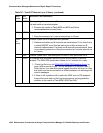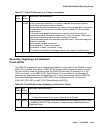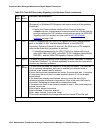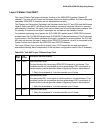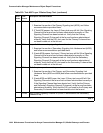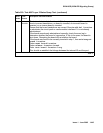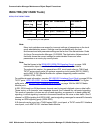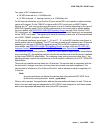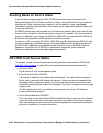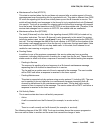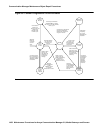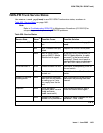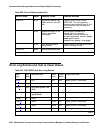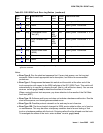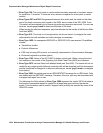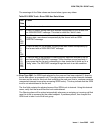
Communication Manager Maintenance-Object Repair Procedures
1448 Maintenance Procedures for Avaya Communication Manager 3.0, Media Gateways and Servers
Alarming Based on Service States
A warning alarm is logged against a DS1 ISDN B-channel trunk when it is placed in the
Maintenance/Far-End or Out-Of-Service/Far-End states, during which the trunk is unusable for
outgoing calls. When a warning alarm is present, use the status trunk grp#/mem#
command to determine the exact state. Other alarms can be diagnosed by using the short and/
or long test sequences.
An ISDN B-channel trunk can be placed in a Far-End service state by either action taken by the
far-end switch or by failure of the far-end switch to respond. For example, if the far end does not
respond to a Remote Layer 3 Query test (#637) for ISDN-SGR, the associated DS1 ISDN trunk
B channels will be placed in the Maintenance/Far-End service state.
As a port on a DS1 circuit pack (DS1-BD or UDS1-BD), or a DS1 Media Module (MG-DS1), and
as part of a signaling group dependent on a D channel (ISDN-LNK) for signaling, operation of
the ISDN-TRK is dependent on the health of these other MOs. In turn, the ISDN D channel
depends on the packet bus (PKT-BUS) for transmission through the system. Keep this
hierarchy of dependencies in mind when diagnosing problems.
DS1 ISDN Trunk Service States
The status trunk command shows the following possible service states for ISDN trunks.
Table 520: Service States
on page 1451 gives recommended procedures for each state.
● In-Service (INS)
The B channel is in its normal operating state.
● Out-of-Service/Far-End (OOS/FE)
A B channel is initialized to this state when administered. The switch sends messages to
the far end to negotiate the B channel into service. If the far end does not respond to the
messages within a certain time period, then the service state remains out of service and
maintenance will periodically resend the messages. The trunk is unusable for incoming and
outgoing calls.
On US interfaces, the trunk is unusable for incoming calls, but on non-US interfaces,
incoming calls will be accepted.
● Out-of-Service/Near-End (OOS/NE)
This is the state of the trunk when the NPE Crosstalk Test fails or when the trunk is busied
out by the system technician. In this state, the trunk is unusable for incoming or outgoing
calls. No messages are sent to the far end until the signaling link comes back into service or
the trunk is released by the system technician.



